Breaking the Speed of Light
It’s easier than you might think, and we’ve been doing it for over a century.
“The doctors realized in retrospect that even though most of these dead had also suffered from burns and blast effects, they had absorbed enough radiation to kill them. The rays simply destroyed body cells — caused their nuclei to degenerate and broke their walls.” –John Hersey
In general, it’s pretty inarguable that high-energy, ionizing radiation is bad for you. And the more of it you get in a short amount of time, the worse people generally tend to fare. Thankfully, most of the ionizing radiation originating in the Universe is blocked by our atmosphere, and most of the radiation we deal with here on Earth is far too low in energy to ionize any type of atom or molecule.
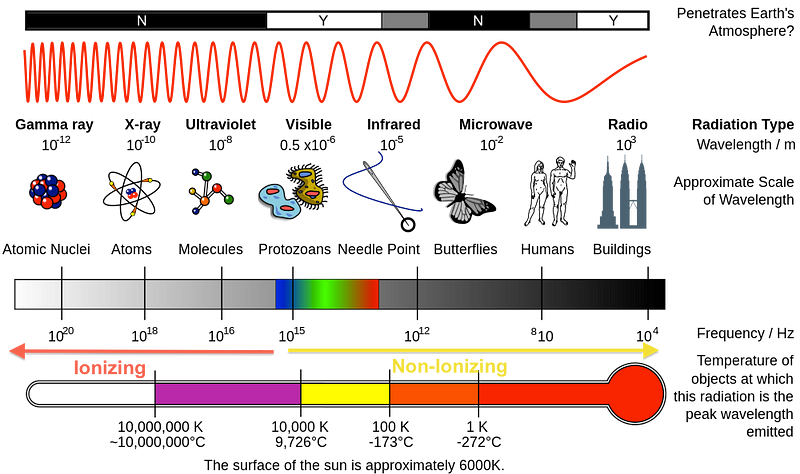
“Ionizing” is a simple word, and it just means knocking an electron off of a neutral atom-or-molecule. Visible light (or less energetic) typically isn’t strong enough to do it, but ultraviolet, X-ray or gamma-ray radiation typically can. It breaks apart bonds, disrupting the function of cells and organelles on a molecular level. The higher the energy and the more luminous the radiation, the more bonds can be broken.
Needless to say, this can damage living tissue quite severely. But, despite the negative effects an uncontrolled dose of ionizing radiation can have, sometimes ionizing radiation can be useful.

Targeted radiation — at cancer cells, for instance — is useful for this exact reason: it destroys the cancer cells. Sure, some of your cells are in the way, too, but radiation therapy is designed to kill the cancer faster (and more effectively) than it kills you.
But too much ionizing radiation will cause too much damage to your body, and spells doom for any human. Here on Earth, the most intense sources of energetic particles are those that come from the world’s most powerful particle accelerators: at present, that’s the Large Hadron Collider, or LHC.

The particles they accelerate — protons — have achieved a maximum speed of 299,792,447 meters per second, just 11 meters per second shy of the speed of light! After the LHC’s impending energy upgrade, it’ll get even closer: up to 299,792,455 m/s, or a tantalizing 99.9999991% the speed of light.
You accelerate charged particles by using electric fields, and you bend them into a circular shape by using magnetic fields. Electromagnets have been used for nearly a century, now, to bring charged particles ever closer to that unbreakable barrier: the speed of light: 299,792,458 m/s.

But there’s absolutely no way to get a proton, or any particle with mass, to move at or faster-than the speed of light; that’s forbidden by Special Relativity. Experimentally, we’d actually be able to tell, from our electromagnetic adjustments of particle accelerators, if they were moving faster than the speed-of-light in a vacuum. And yet, even at the incredible speeds these particles are traveling, you can’t tell whether a proton beam is on simply by looking.
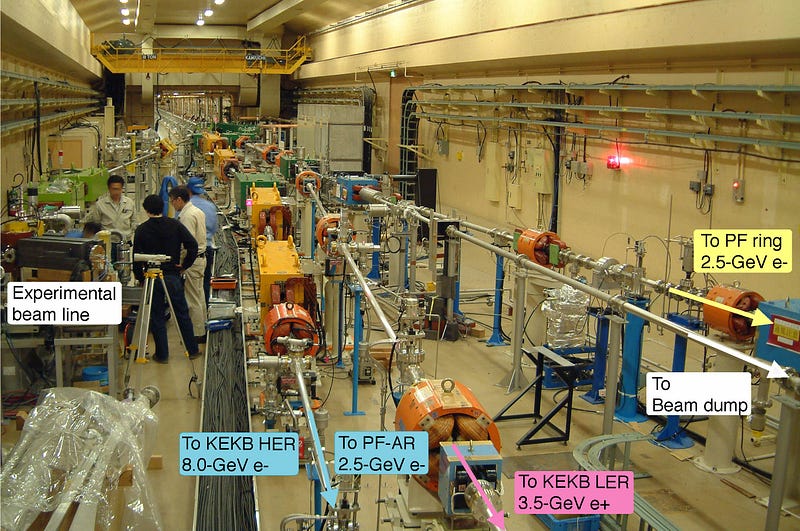
In fact, even if you stepped into the beam line, you wouldn’t be able to feel it! Similar to how you can’t feel X-rays at the dentist’s office, when these particles strike you, there’s no part of your nervous system or sensory organs that are sensitive to them.
And yet, if you wanted to detect — as a human — whether the beam of high-energy particles was on-or-off, there is a simple way, one that was actually fairly common in the early days of particle physics.

With your eyes open, you simply can’t see whether there’s a beam or not, no matter what you do. But if you (do not try this) close your eyes and stick your closed eye where the beam should be, you’ll start seeing flashes of light on the inside of your eyelid if the beam is on!
The reason for this is as simple as why light breaks into a rainbow when you pass it through a prism.

You see, the speed of light — 299,792,458 meters-per-second — is the speed of light in a vacuum. But if you pass that light through a medium, or something made out of atoms rather than the vacuum of empty space, the speed of light will be lower than it is in vacuum.
In air, for example, the speed of light is “only” about 299,790,000 m/s, but in water — which is what most of your body is made of — the speed of light is already down to around 75% of what it is in vacuum!

This causes the weird “bending of light effects” that you see when you put objects partially into water, but it also causes light to slow down!
And while light of any wavelength might slow down instantaneously in a medium, anything with mass won’t. So if you’re moving at 80%, 90%, or 99.9999% the speed of light-in-vacuum and then you transition into water all of a sudden, you’ll find yourself moving faster than the speed of light in that new medium! And if that’s the case, something remarkable happens.
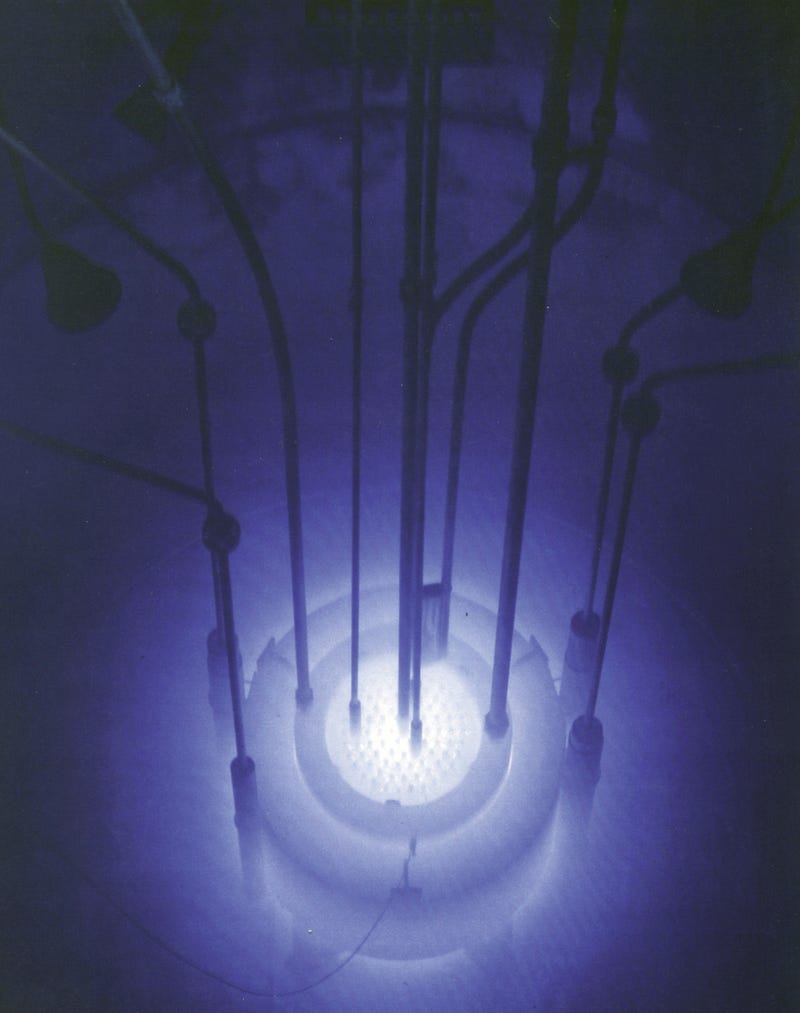
When a charged particle moving slower than the speed of light-in-vacuum enters a medium where it’s moving faster than light in that medium, it polarizes the surrounding molecules as it passes them. The excited molecules quickly drop back down to their ground state, emitting a very special type of radiation known as Čerenkov radiation, which shows up as a characteristic blue glow in, for example, the nuclear reactor shown above.
Polarizing the molecules costs energy, and it comes from the initial faster-than-light-in-a-medium particle, which loses energy (and speed) in proportion to that. It will continue losing energy in this fashion until it drops below the speed-of-light in that medium, emitting Čerenkov radiation all the while. Because of how the Čerenkov light is emitted — perpendicular to the incident particle but with some momentum in its initial direction — the radiation takes the shape of a narrow cone.
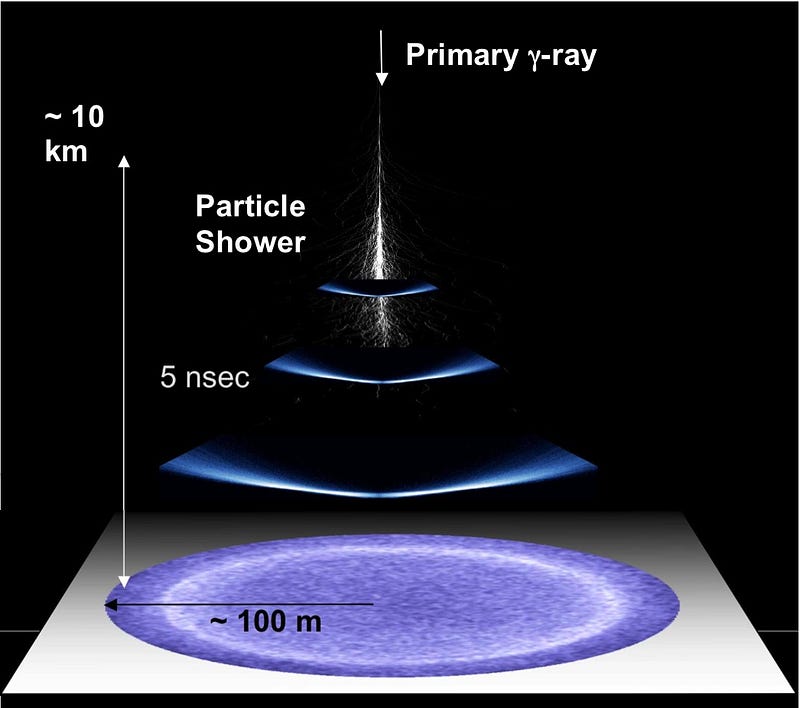
So if you stuck your eye, with your eyelid closed in the path of a high-energy beam of particles, when those particles struck the fluid in your eye (the vitreous gel in particular), they’d cause the emission of Čerenkov radiation, which includes visible light. In other words, if the beam was on, you’d see points of light with your eye closed!
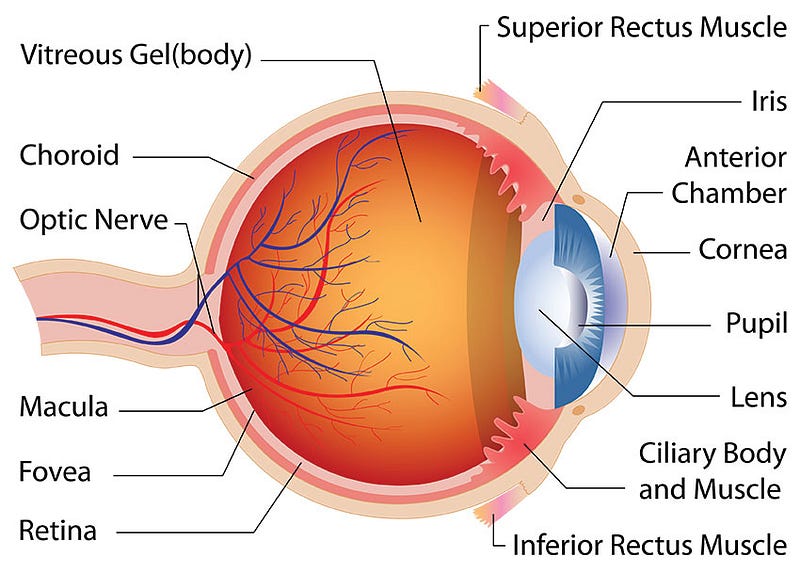
If that makes you squirm, it should. Physicists used to die from cancer from lack of safety when it came to radiation at alarming rates, and we are no longer (thankfully) allowed to test whether the beam is on or not via methods like this. It ceased to be common practice some 70 years ago, which is good, because as the energies and luminosities of the beams have increased, so has the damage that they can cause to living tissue.
But in 1978, the most powerful particle accelerator in the Soviet Union — achieving energies of 70 GeV — had an accident.
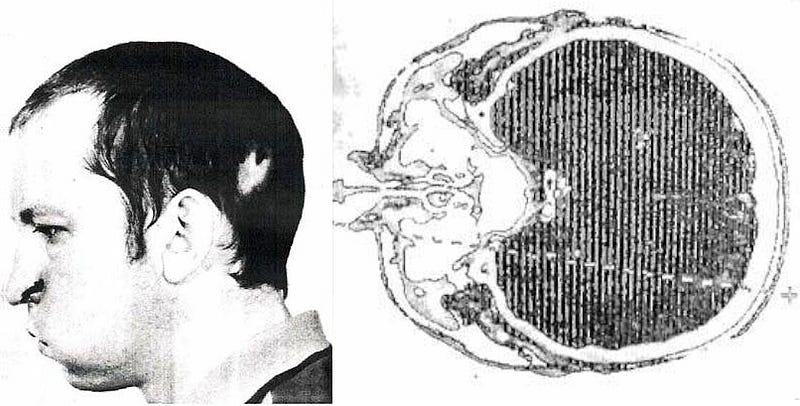
Anatoli Bugorski was examining a malfunctioning piece of equipment when a safety failure occurred, and the beam turned on, passing just left of his nose, his entire skull, and out the rear left of his skull. He said he saw a light “brighter than 1000 Suns” but felt no pain.
A few days later, the left side of his face swelled tremendously and the layers of swollen skin began peeling off; he was left with permanent nerve damage and now has complex seizures. But remarkably, despite receiving what’s typically a lethal dose of radiation, he lives to this day. The left side of his face is not only entirely paralyzed, but appears to have stopped aging. As you can see, below, the left side of his face looks much younger than the right, and modern medicine isn’t exactly sure why!
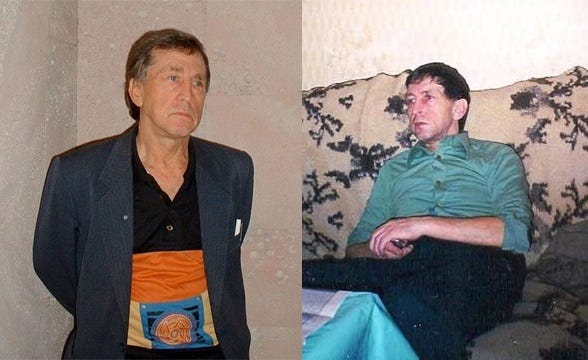
He continues to be an experimental physicist, with his mental capacity somehow undiminished since the accident.
So, physically, it’s actually very easy to break the speed of light, so long as you’re capable of slowing light down to below the speed of your particles! Nuclear reactors, particle accelerators and cosmic rays are all common examples of sources that emit Čerenkov radiation in water, although I highly recommend using something other than your body as the detector!





